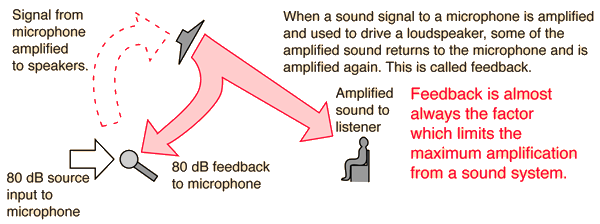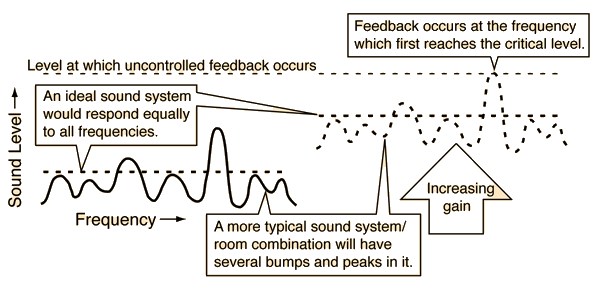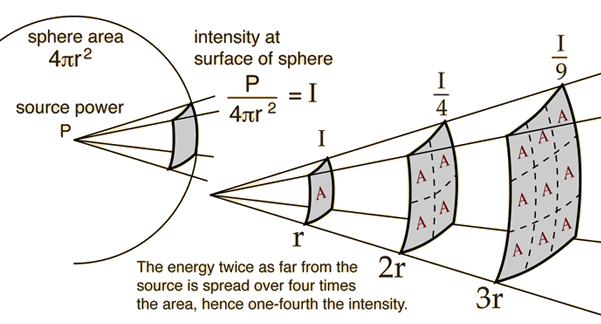The Limitation of Feedback

If you speak one word at the microphone at a level of 80 dB and the loudspeaker returns that word to the microphone at 80 dB, then you can go home. The sound system will repeat the sound all day, "chasing its tail" from microphone to loudspeaker.
The situation depicted here is the theoretical maximum gain where the feedback signal is equal to the input signal. It is not practical to get this kind of gain, so you seek to stay considerably below this - at least 3dB is a common rule. Any time the feedback signal is comparable to the input signal, it represents a distortion or degradation of the signal. The amplified signal is coming back to the microphone with a delay and with whatever "coloring" the sound system and the room give to it.
| How much amplification can you get? | Why does the sound system "ring"? |
Sound reproduction concepts
| HyperPhysics***** Sound | R Nave |

